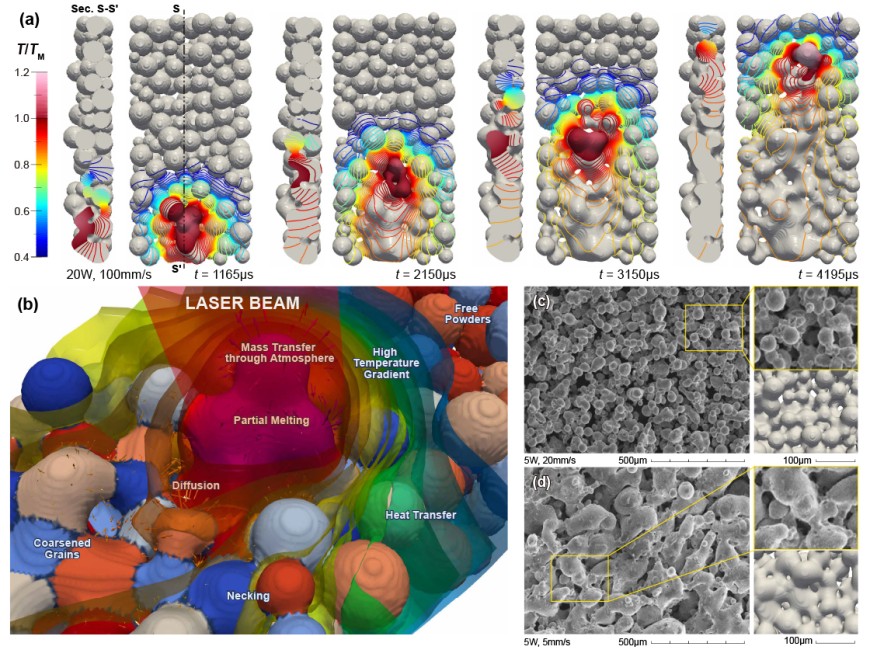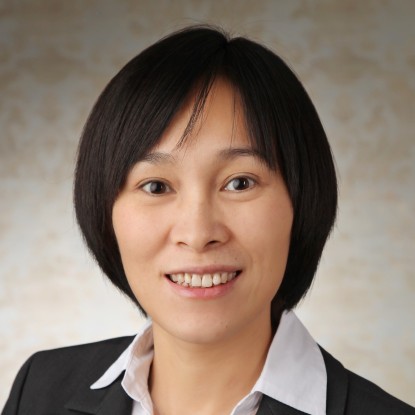3D non-isothermal phase-field simulation of microstructure evolution during selective laser sintering
New Publication in “npj Computational Materials”
2019/08/10

Authors: Yangyiwei Yang, Olav Ragnvaldsen, Yang Bai, Min Yi, and Bai-Xiang Xu
Predicting the microstructure during selective laser sintering (SLS) is of great interests, which can complement the current time and cost expensive trial-and-error principle with an efficient computational design tool. However, it still remains a great challenge to simulate the microstructure evolution during SLS due to the complex underlying physical phenomena.
In this work, we present a three-dimensional finite element phase-field simulation of the SLS single scan, and revealed the process-microstructure relation. We use a thermodynamically consistent non-isothermal phase-field model including various physics (i.e. partial melting, pore structure evolution, diffusion, grain boundary migration, and coupled heat transfer), and interaction of powder bed and laser power absorption. The initial powder bed is generated by the discrete element method. Moreover, we present in the manuscript a novel algorithm analogy to minimum coloring problem and managed to simulate a system of 200 grains with grain tracking using as low as 8 non-conserved order parameters. The developed model is shown to capture interesting phenomena which are not accessible to the conventional isothermal model. Specifically, applying the model to SLS of the stainless steel 316L powder, we identify the influences of laser power and scanning speed on microstructural indicators, including the porosity, surface morphology, temperature profile, grain geometry, and densification. We further validate the first-order kinetics during the porosity evolution, and demonstrate the applicability of the developed model in predicting the linkage of densification factor to the specific energy input during SLS.



